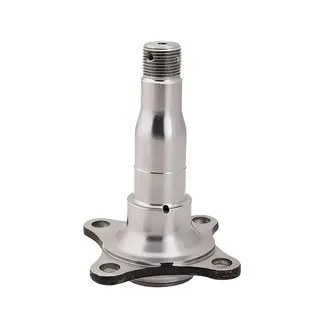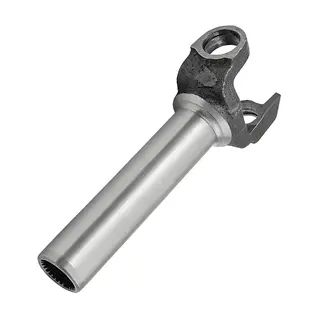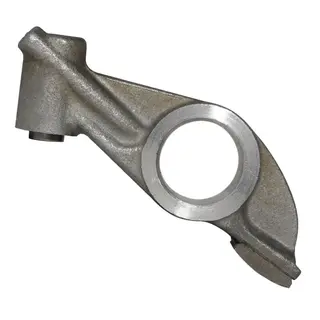In modern manufacturing, the choice of metal processing technology, forging or casting, is crucial for the quality and performance of products. Magnesium alloy, as a lightweight and high-performance material, is widely used in aerospace, automotive, and electronics industries. However, due to its unique physical and chemical properties, the processing of magnesium alloy requires special attention. This article will detail the key points of magnesium alloy forging technology and how to improve product quality and production efficiency by optimizing process parameters.
The following sections will explore the limitations of casting processes and the advantages of forging processes to help better understand the characteristics of these two technologies, thereby making wiser choices in actual production.
Casting is a common metal processing technology, especially suitable for manufacturing workpieces with complex shapes and large dimensions. However, there are some inevitable defects in the casting process. For example, internal defects such as blowholes, porosity, and cracks are prone to occur in castings, which directly affect the quality and performance of the castings. To meet the requirements for surface quality, castings usually need post-treatment processes such as shot blasting, grinding, and polishing. These post-treatment processes not only increase production costs but also extend the production cycle.
Compared with casting processes, forging processes have significant advantages. Forging is a method of processing that causes plastic deformation of metal by applying pressure. Magnesium alloy forgings have better dimensional and shape stability, and higher production efficiency. During the forging process, internal defects such as blowholes, porosity, and cracks in the material are eliminated, and the material structure becomes more uniform and fine-grained. This not only improves the strength and toughness of the material but also enhances its mechanical properties.
Next, we will delve into the characteristics of magnesium alloy forging technology, including its process flow, technical requirements, and comparisons with forging processes of other materials.
Magnesium alloy has good thermal conductivity, which is particularly pronounced at high temperatures. This characteristic allows magnesium alloy to dissipate heat quickly during the forging process, maintaining uniform temperature distribution and thereby reducing the impact of thermal stress on product performance. However, the softening temperature of magnesium alloy is usually between 250°C and 350°C. If the holding time is too long, the grains may coarsen, and subsequent heat treatment processes cannot fully restore its strength. Therefore, it is essential to strictly control the heating temperature and holding time during the forging process to avoid alloy softening issues.
Magnesium alloy forging processes can be classified into various types based on temperature and method. In terms of temperature, there are hot forging, isothermal forging, and cold forging; in terms of method, there are free forging and die forging. Free forging involves placing the workpiece on the press platform of the equipment and applying pressure to cause deformation in the vertical direction. This method allows for the adjustment of the workpiece's position to achieve the desired product shape and size. Isothermal forging is performed after heating the workpiece and the die to the same temperature. This process requires a lower pressing rate and a longer forging time. Due to the creep of metal under certain temperature and external stress, the material undergoes dynamic recrystallization, resulting in better dimensional accuracy and consistent performance indicators.
The process flow of isothermal forging is relatively complex, mainly including steps such as billet cutting, heating, forging blank preparation, etching, isothermal forging, grinding, surface treatment, and inspection. In production, it is usually necessary to use multiple forming methods and surface treatments to ensure the pass rate of the finished product quality. During the first forging, the internal structure utilization of the material is low, internal defects may exist, and the grain size is large. To address these issues, multiple forging processes are employed. Multiple forging can improve material utilization, optimize the internal structure of the material, reduce internal defects, and increase material utilization and yield. Moreover, multiple forging can refine the grains, enhance the strength and toughness of the material, eliminate internal stresses generated during the first forging process, improve the stability and service life of the material, and thus meet the requirements for higher performance applications.
After gaining a deep understanding of the characteristics of magnesium alloy forging technology, we will explore how to optimize this process. Optimizing magnesium alloy forging technology can not only improve production efficiency but also significantly enhance the quality and performance of the final product.
Temperature is a key parameter in magnesium alloy forging technology. Due to the low specific heat capacity of magnesium alloy, the die must be preheated sufficiently; otherwise, the forging blank temperature will drop significantly, the filling ability will be greatly reduced, and the forging may even break. During die forging, the contact area between the workpiece and the die is large, and the contact time is long, so the die temperature should not be much lower than the billet temperature. In ring rolling, the contact area between the workpiece and the die is small, and the contact time is short, so the requirements for die temperature are relatively relaxed. Moreover, during ring rolling, the metal releases some deformation heat, which can compensate for part of the heat loss, so the die only needs to be slightly heated.
The design and preparation of working tools and dies are key technologies for magnesium alloy forgings. The forging temperature of magnesium alloy is not very high, so dies can be made from 5CrNiMo steel or 5CrNiMn steel. The working surface of the forging die should be finely ground to reduce surface roughness, which facilitates the flow of magnesium alloy during the forging process and prevents rough surfaces, scratches, or other forging defects on the forgings. Since the diffusion rate of magnesium alloy atoms is slow during the heating process and the dissolution time of the strengthening phase is long, the actual heating time is not short. The heating and holding time of the forging blank before forging can be calculated at 1.5 to 2 minutes per millimeter of diameter or thickness, but the total heating time should not exceed 6 hours to avoid grain growth and softening.
The forging process parameters of magnesium alloy need to be strictly controlled. For example, the hammer forging deformation of magnesium alloy should not exceed 30% to 50%, but it can reach 70% to 90% on a hydraulic press. Using a hydraulic forging machine can produce magnesium alloy forgings with small sharp corners, rounded corners, and thin webs or bottoms. The draft angle of the forging should not be greater than 3°, so when hammer forging or high-speed forging magnesium alloy, it is essential to strictly control all process parameters. In addition, free forging of magnesium alloy is mostly carried out on flat or shaped anvils, and it can also be used for ring rolling of ring-shaped or circular parts. The tools should be heated before forging to ensure the final forging temperature.
To ensure good forging properties of the billet, the ingot must undergo skinning and deep homogenization treatment to correct surface defects. The homogenization annealing specifications for magnesium alloy ingots are shown in Table 4. The microstructure of the pre-extruded rod is a deformed structure with finer grains, which allows for greater deformation speed and deformation amount during forging. The billet cutting of the ingot should be done by sawing, not shearing, to avoid cracks at the cut. Before forging, the forging blank should be machined to eliminate various defects to prevent cracking during forging. The surface of the magnesium alloy extruded rod has a coarse grain ring, which should be turned off.
Although magnesium alloy forgings account for a small proportion of magnesium alloy pressure-processed products, they are indispensable important load-bearing structural components in helicopters, automobiles, and motorcycles. Compared with steel forgings, aluminum alloy forgings, and titanium alloy forgings, magnesium alloy forgings have unique advantages. When the grain flow direction is consistent with the main load direction, the forging has high static and dynamic strength properties. Moreover, the forging has a dense structure, free of porosity and porosity, and good mechanical properties, making it an excellent airtight structural component.
However, magnesium alloy forging also faces some challenges. For example, the forgeability of magnesium alloy is much lower than that of aluminum alloy and is extremely sensitive to deformation speed. Increasing the deformation speed significantly reduces plasticity. Therefore, some complex magnesium alloy forgings require two or three heating and forming processes, that is, multi-fire forging. At the same time, the heating temperature should be lower each time to prevent grain growth. In addition, magnesium alloy will crack during unsupported medium deformation bending. Therefore, it is essential to strictly control all process parameters during the forging process to ensure the quality and performance of the product.
Magnesium alloy forging technology is an efficient and high-quality metal processing method. By optimizing temperature control, die design, and forging process parameters, the quality and performance of magnesium alloy forgings can be significantly improved. Although there are some challenges in magnesium alloy forging, with the continuous progress of technology and the continuous optimization of processes, the application prospects of magnesium alloy forging in aerospace, automotive, and electronics industries are broad. In the future, with in-depth research and application of magnesium alloy forging technology, we can expect to see more high-performance, lightweight magnesium alloy products entering the market, injecting new vitality into the development of modern manufacturing.



